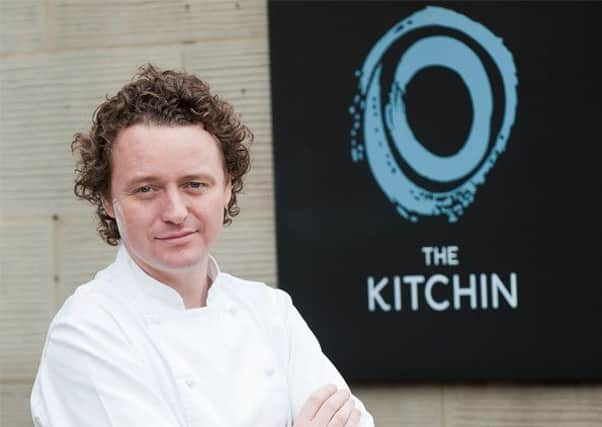Tom Kitchin: Cauliflower and kale recipes


These vegetables haven’t always been popular but as we become more health conscious they are being given a little more love and attention. They are incredibly tasty and nutritious, packed with antioxidants, vitamins and minerals, so we should be making the most of them. You’ll almost always find at least one variety in season and winter brings many different local options.
The challenge is to do something exciting with them and work with other ingredients and flavours that complement them rather than overpower them.
Advertisement
Hide AdAdvertisement
Hide AdPerfectly cooked cauliflower cheese is a winner on a cold winter’s night. Cauliflower should be firm and compact. Choose those that have blemish-free, creamy-white heads surrounded by fresh vibrant leaves and clean white stalks. I’ve managed to perfect a recipe that ensures the cauliflower is the star of the show and isn’t overpowered by layers of cheese. This for me is a really good Scots dish if you get your hands on some nice creamy Isle of Mull cheddar, and as a father of four I’ve learnt it’s the perfect way to get kids to eat their vegetables.
Kale is another great brassica. It’s part of the cabbage family and is in season and at its best from mid-September to the end of February in Scotland. When you’re shopping for kale, you’ll find two varieties – kale with smooth leaves and curly kale with small frills, but both are equally good. Kale was actually known in England as cole or colewort, but now it’s generally known by its good old Scots name. This leafy green is great paired with glorious game or fresh Scottish seafish.
If you’re trying kale, carefully break the bright green leaves from their stalks and then wash, shred or chop them, before gently stir-frying or boiling. Always be careful about how long you have the kale before you cook it though, as after a few days it starts to get a little bitter and it’s not at its best.
When it comes to cooking brassicas, the key is to use simple methods like roasting, stir frying or sautéing. Never overcook brassicas or they will lose their nutrients, flavour and texture. If you’re planning winter suppers, pack some of these worthy vegetables into your everyday cooking.
Salmon with ‘beurre d’escargot’ & Kale
Serves 4
• 4 salmon fillets (with skin), about 150g each
• sea salt and freshly ground black pepper
• olive oil for cooking
• 300g kale
• squeeze of lemon juice, to taste
• Beurre D’Escargot
• 2 tsp olive oil
• 250g Parma ham, finely chopped
• 1 shallot, peeled and finely chopped
• 50g fennel, trimmed and finely chopped
• 50g button mushrooms, finely chopped
• 1 garlic clove, peeled and crushed
• 1 tsp chopped parsley
• 1 tbsp chopped tarragon
• 250g butter, softened
• 1 tbsp grain mustard
• 1 tbsp ground almonds
• Lemon wedges to serve
Method
First make the savoury butter. Heat a large non-stick frying pan over a medium-high heat, then add a little olive oil. Add the chopped Parma ham to the pan and cook for two minutes, stirring occasionally. Now add the shallot, fennel, mushrooms and garlic with the rest of the olive oil and sweat for three to four minutes, stirring occasionally. Add the chopped herbs, stir well, then remove from the heat and let it cool. In a separate bowl, whisk the butter until creamy. Add the cooled vegetables and ham and stir to combine. Now add the mustard and ground almonds and mix well. Spoon the butter on to a sheet of clingfilm and roll it in the clingfilm to form a log. Twist the ends to secure. Refrigerate to firm up.
When ready to serve, heat the oven to 180C/Gas 4. Season the salmon fillets on both sides with salt and pepper. Heat a large non-stick ovenproof frying pan over a medium-high heat. When it is hot, add a little olive oil and place the salmon fillets in the pan, skin side down. Cook, without moving, for two to three minutes until the skin starts to crisp. Now place the pan in the oven for three to four minutes until the fish is cooked.
In the meantime, unwrap the savoury butter and cut four generous slices. When the salmon is cooked, transfer the fillets to a warm plate and set aside in a warm place. Heat a little more oil in the frying pan, add the kale, season and toss briefly until wilted. Remove from the heat and add lemon juice to taste.
Divide the kale among warm plates and lay a salmon fillet across the middle. Top with a slice of savoury butter and serve with lemon wedges.
Cauliflower Cheese
Serves 4
• 1 head cauliflower
• 500ml milk
• 4 tbsp flour
• 125g butter
• 125g Isle of Mull cheddar grated (plus extra for topping)
• 1 tsp wholegrain mustard
• 1 tsp Dijon mustard
• 4 drops Tabasco
• 1 tbsp Worcestershire sauce
• salt and pepper
Method
Advertisement
Hide AdAdvertisement
Hide AdSeparate the cauliflower into small florets and blanche until just tender in boiling salted water. Then leave to cool.
In small pan, gently heat the milk. In a separate medium pan, melt the butter, then stir in the flour to create a paste or roux.
Cook the roux gently for four to five minutes, then add in the warm milk stirring continuously. Keep cooking the sauce for four to five minutes or until it has thickened to a consistency that coats the back of a spoon. Remove from the heat and stir in the cheese, salt and pepper, mustard, Tabasco and Worcestershire sauce. Taste and add more cheese, mustard and seasoning if required.
Layer the cooked florets and sauce in an ovenproof bowl and top with grated cheese. Bake in the oven at 180C/Gas 4 until hot and golden brown on the top.
Follow Tom on Twitter @TomKitchin